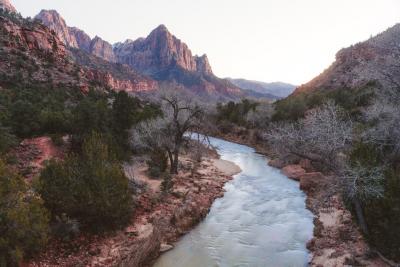A Global Hydrologic Framework to Accelerate Scientific Discovery
Research in energy-water-land systems—and understanding how water scarcity can affect these systems—is rapidly progressing. To quantify changes in—and the effects of—future freshwater availability, a team from the U.S. Department of Energy’s Pacific Northwest National Laboratory (PNNL) developed the Xanthos global hydrology model, which can be used independently or as a part of a coupled modeling system. Researchers can use Xanthos to explore how different climate, socioeconomic, or energy scenarios affect regional and global water availability over the 21st century. In version 2 of the model, the PNNL team built a component-based framework to rapidly incorporate and test new hydrologic process modules—or code—within a robust environment, complete with diagnostics and calibration capabilities.
Within Xanthos version 2, scientists can easily incorporate and test evolving hydrologic process models as components, or selectable, compatible parts of the Xanthos framework. For example, researchers can customize a specific configuration of components to address the role of snowmelt in characterizing drought or to explore the role of model assumptions in characterizing the uncertainty of complex coupled energy-water-land systems. The process of incorporating and testing models within the component-based framework is faster than what it would take to reproduce an entire configuration of models if users added their own from scratch. The usability of Xanthos version 2 enables researchers to rapidly address complex multisector dynamics science challenges, such as determining water scarcity impacts on land use, and could help accelerate energy-water-land research even more.
Xanthos, an open-source model written in Python, provides a solid foundation for continued advances in global water dynamics science. The model simulates historical and future global water availability on a monthly time step at a spatial resolution of 0.5 geographic degrees. Xanthos also can serve as the freshwater supply component of the Global Change Assessment Model (GCAM), also developed at PNNL.
For Xanthos version 2, the PNNL team built upon the original version by creating a component-based framework in which users can swap out or extend previously existing core components of the model—potential evapotranspiration (PET), runoff generation, and river routing—without starting from scratch. For example, users can now swap out the potential evapotranspiration core component with one they think captures the dynamics of the systems and processes they are trying to model. The component-style architecture of Xanthos version 2 enables researchers to quickly incorporate and test the latest energy-water-land research in a stable modeling environment with prebuilt diagnostics. The PNNL team also created a robust default configuration that includes a calibration module, hydropower modules, and new PET modules. These enhancements are now available to the scientific community in Xanthos version 2, which can be downloaded from GitHub.

